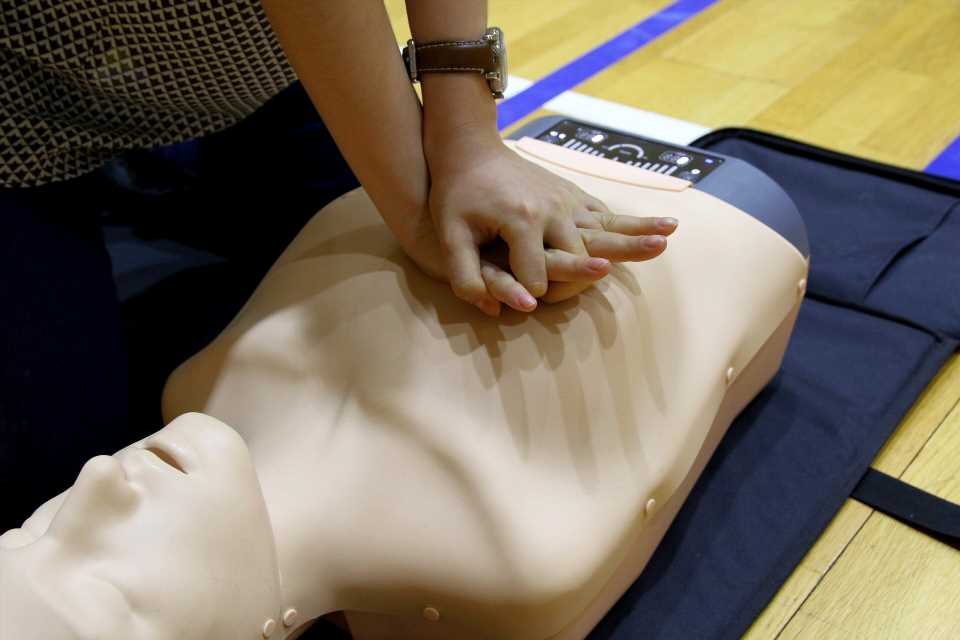
Black and Hispanic individuals who experience a witnessed cardiac arrest at home or in public are substantially less likely than white individuals to receive cardiopulmonary resuscitation (CPR) from a bystander, according to a study being presented at the American College of Cardiology’s 71st Annual Scientific Session.
Nearly 1,000 Americans suffer from cardiac arrest (when the heart suddenly stops beating) outside of the hospital each day, with most occurring at home. People who receive CPR immediately are two to three times more likely to survive with brain functioning intact compared to those who do not receive CPR immediately. This nationwide study found that Black and Hispanic individuals were 41% less likely than white individuals to receive CPR when suffering cardiac arrest in public and 26% less likely to receive CPR when the cardiac arrest occurred at home.
“It’s critically important to understand who gets bystander CPR for a cardiac arrest and how we can improve those rates,” said Paul S. Chan, MD, professor of medicine at the University of Missouri–Kansas City School of Medicine and the Saint Luke’s Mid America Heart Institute, and the study’s senior author. “We found that bystander CPR rates are much higher in white communities compared with Black communities. In addition, there were patient-level disparities in getting bystander CPR regardless of the type of community the person was in, even though there were, in all of these cases, bystanders who could have provided aid and assistance.”
The researchers analyzed over 110,000 cardiac arrests that occurred in the U.S. between 2013-2019. All events included in the analysis occurred outside of a hospital setting but were witnessed by a bystander. Researchers found that when the cardiac arrest occurred in public, 46% of Black and Hispanic people received CPR compared with 60% of white people. At home, 39% of Black and Hispanic people received CPR compared with 47% of white people. The patterns were the same regardless of the racial makeup or income level in the neighborhood where the cardiac arrest occurred.
“This disparity wasn’t only present in majority white communities, but also in majority Black and Hispanic communities,” Chan said. “A white person going into cardiac arrest in a community that was more than 50% Black and Hispanic was still more likely to get bystander CPR than a Black or Hispanic person in that community.”
Although the study did not examine specific factors behind CPR rates, the researchers said access to CPR training likely plays a role, since people are more likely to attempt CPR if they have been trained in it. The cost of CPR training, as well as when and where it is offered, may pose barriers for some communities.
“We need to think creatively about how to offer CPR instruction to vulnerable populations that have historically not received training and focus on conducting more trainings in the communities where the disparities are greatest,” Chan said. “For example, we could make CPR training available at little to no cost and do it at times and locations that are more convenient, such as Black churches or Hispanic community centers, or allow many people to be trained at once, for example as part of a Juneteenth or Martin Luther King Jr. Day event.”
In addition, researchers said potential variability in whether 911 dispatchers instruct bystanders on giving CPR while waiting for an ambulance and rates of dispatcher-assisted CPR could also be affected by language barriers. Implicit or explicit bias could also factor into bystanders’ willingness to assist people of color, Chan said, adding that it is important for images and manikins used in CPR training to reflect a diversity of racial groups.
Researchers said that overall rates of CPR were relatively low across all racial groups in the study. Even though bystanders were present in all cases, data showed CPR was attempted less than half the time.
“We still have a long way to go in getting the message out that people need to start CPR and not just call 911,” Chan said.
In the past decade, recommendations have shifted to focus on hands-only CPR, in which a bystander administers chest compressions at a rate of 100-120 compressions a minute but does not pause to give mouth-to-mouth, while waiting for paramedics to arrive. CPR is recommended for anyone who suddenly collapses and is unresponsive; checking for a pulse is no longer considered necessary before starting CPR.
Source: Read Full Article
